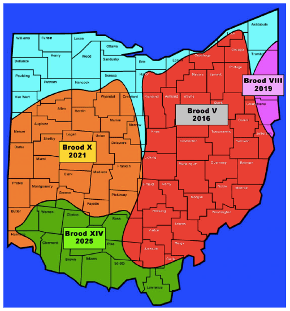
Figure 1. Area shaded in orange is where brood X of the periodical cicada is expected to emerge in 2021 (from Periodical and “Dog-Day” Cicadas, OSU extension Fact Sheet ENT-58, by D. Shetlar and J. Andon, 2015;
https://ohioline.osu.edu/factsheet/ENT-58
).
In case you have been living underground for the past 17 years, take note of the map showing the impending mass emergence of billions of Brood X cicadas in central and southwestern Ohio (Figure 1).
There is also a useful timetable for when to expect the emergence, mating, oviposition and end of the Brood X cicadas (Figure 2). The whole process is temperature driven but should begin in April and be over by the end of June.
If you are primarily a vegetable grower, you can relax a bit as the cicada emergence will likely not affect or damage any crops but adults may randomly appear in a crop and serve as a noticeable and potentially loud contaminant.
For small fruit and tree fruit growers, there is a chance of damage to stems about ¼” in diameter due to cicada oviposition. Celeste Welty, OSU Dept. of Entomology, wrote an excellent article for the Ohio Fruit Newsletter recently that covers chemical and cultural options (https://cpb-us-w2.wpmucdn.com/u.osu.edu/dist/b/28945/files/2021/03/OFN_FEB_2021-FINAL-V2.pdf).
For anyone with an interest in reporting locations of cicada emergence, there is an app called ‘Cicada Safari’ that is available for iOS and Android devices. It is interesting that most of the cicada broods do emerge as expected 17 years after the previous emergence, but if they are off-schedule, it is usually by 4 years, usually 4 years early. Excellent information about the biology and behavior of cicadas can be found at the cicada mania website: https://www.cicadamania.com/ . Other general information about cicadas can be found there too.
Last but not least, why not take advantage of this rare free protein and try cicadas in a variety of tasty snacks and meals!
- https://www.cleveland.com/entertainment/2016/05/cicada_recipes_how_to_cook_the.html
- https://www.bonappetit.com/uncategorized/article/how-to-cook-cicadas-according-to-3-richmond-va-chefs
- https://www.nationalgeographic.com/animals/article/130515-cicadas-recipes-food-cooking-bugs-nation-animals
Bon appetite!
